| Vintage Pulp | Aug 5 2023 |

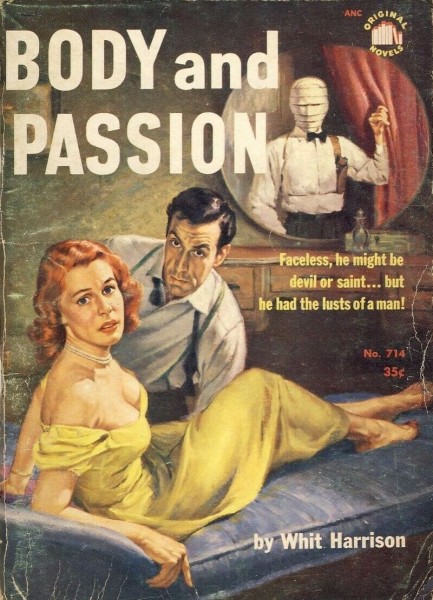
Above: a fun cover in the cheaters who got caught category for Whit Harrison's, aka Harry Whittington's, Body and Passion, 1952, from Original Novels, with cover art by an unknown. Some sources say this was also published as Dear Deadly Past, but other sources say it was published as Satan's Widow. The confusion may derive from Whittington's U.S. Wikipedia page versus his French Wikipedia page. Hopefully that'll get sorted out.
| Vintage Pulp | Jul 9 2022 |

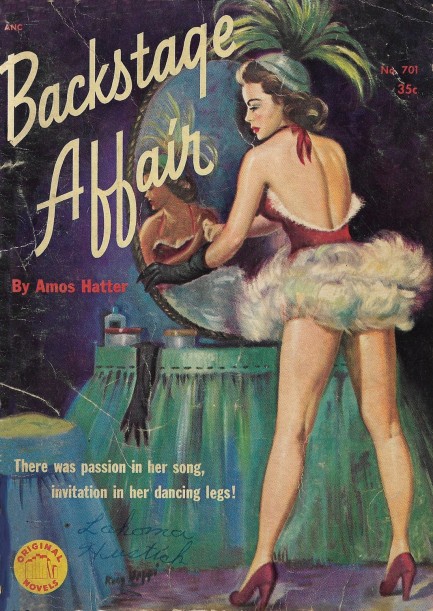
First matter—we met a couple of nice women at the gintoneria in one of our local plazas last night and said we'd mention them today as a way of proving that we were telling the truth about being the makers of this website. So hello, friends, and sorry about all the nudity you'll find here. Hah—well, not really. Anyway, last year we read Amos Hatter's (James W. Lampp's) unusual 1952 titillation novel Island Girl, and since we're repeat offenders when it comes to authors who intrigue us, we picked up another Hatter—1951's Backstage Affair. It's about a dancer and singer named Mitzi West who's trying earn her first big show business break, but is stuck in St. Louis finding it exceedingly difficult not to become a prostitute to support herself. By now you know the formula with these tales, so we don't need to explain the plot in more detail. It isn't as good as Island Girl, but it's enjoyable enough, and it came with Rudy Nappi cover art—signed by both him and a former owner of the book named Lahoma Hustich. Love your name, Lahoma.
| Vintage Pulp | Feb 15 2022 |

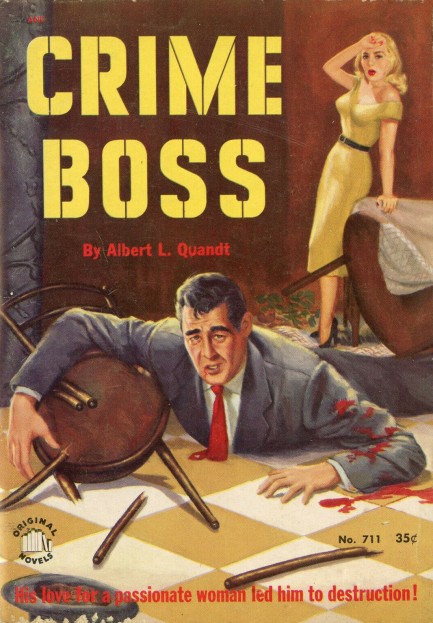
We had a friend who habitually added salt to every meal ever put in front of him. He was American, obviously. When we went to France together, our first dinner out he asked a waiter for a salt shaker (you won't find them on the tables). He hadn't even tasted the dish yet. Salt was a reflex with him. He got the dirtiest look ever shot at a paying customer and probably came a hair away from the treatment you see on the cover of Albert L. Quandt's Crime Boss, published by Original Novels in 1952. But there's no angry chef in the book. It's a mob tale, the story of one Vic Santo, who rises to be king of the rackets. The art is uncredited, and by the way, that thing that looks like a band of scotch tape on the book's spine is actually in the art. It's a textured column in the restaurant.
| Vintage Pulp | Oct 15 2020 |

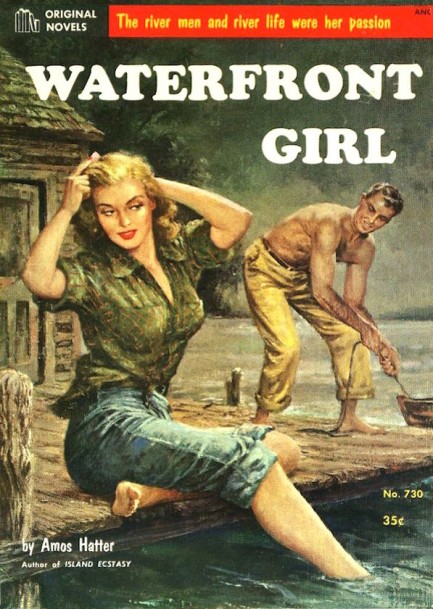
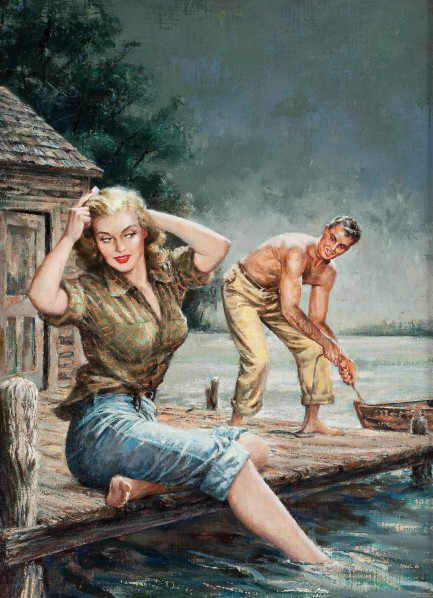
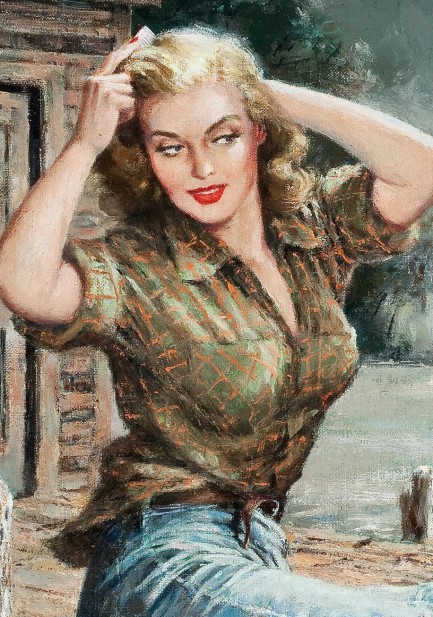
| Vintage Pulp | Sep 16 2017 |

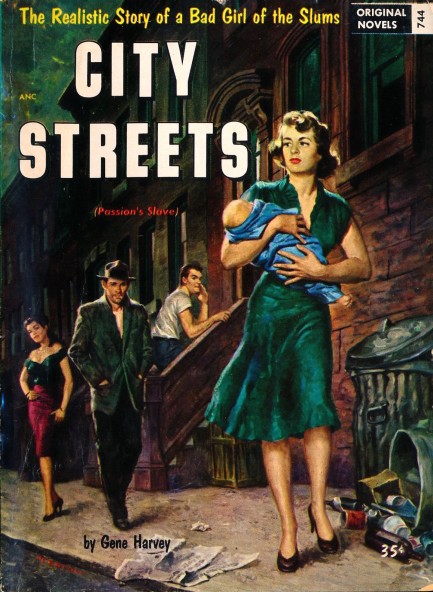
| Vintage Pulp | Sep 11 2017 |

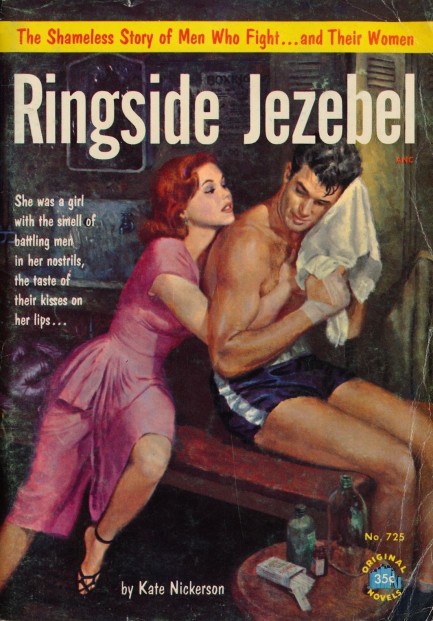
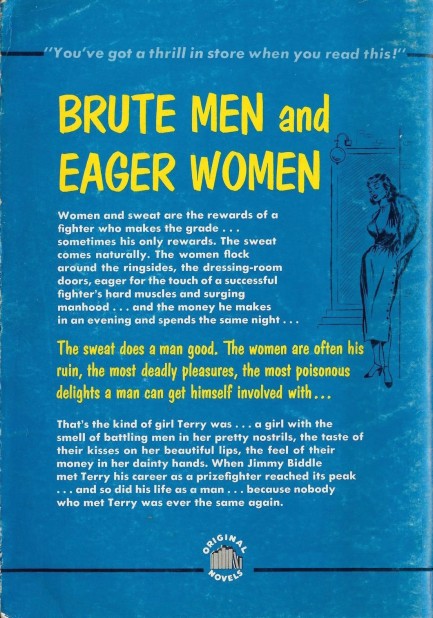
| Vintage Pulp | May 14 2017 |

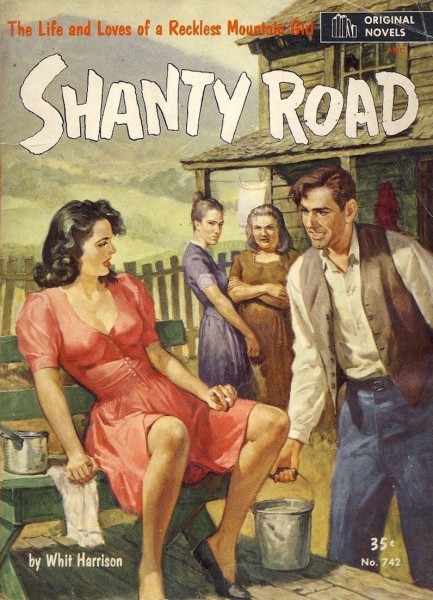
The hicks keep on coming. Above is another entry in the always fertile farmer sleaze genre, Shanty Road, by Whit Harrison, aka Harry Whittington. A hot hayseed named Amy inspires jealousy and desire among the locals, and things get interesting when a handsome young city doctor comes along and likes what he sees. In order to win Amy he'll have to beat back rivals and earn trust. You may remember Whittington also wrote the rural novels Shack Road and Backwoods Shack, and he authored others we haven't discussed. By now you've probably realized he was the king of this genre, and in fact he gave the niche its name—“backwoods novels.” This one doesn't have a backwoods price, though. Vendors are asking $175 and up for it. 1954 copyright.
| Vintage Pulp | Dec 9 2016 |

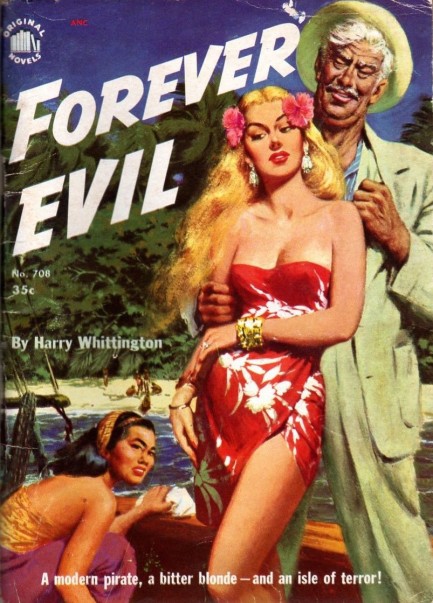
Forever Evil is an exceedingly scarce digest style paperback written by Harry Whittington for Original Novels. When we say scarce, we mean triple-digit scarce—like $175 per copy scarce. The story concerns a New York party girl (with the excellent name Billie Parker) who ends up in a hotel room with a corpse and has to flee the police and, possibly, the perpetrators. How far does she run? Well, the cover tells the story. But even in paradise she can't help hooking up with the lowest characters around, and in any case, in mid-century fiction it's impossible to escape one's troubles. The cover art for this is uncredited, but it's amazing. The copyright is 1952.
| Vintage Pulp | Dec 6 2016 |

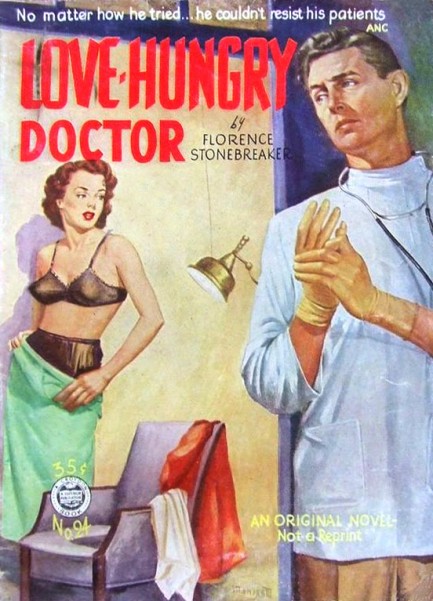
If you're thinking of writing a book but fear you're too late to start, take note: Florence Stonebraker published her first novel at age forty-one and went on to write more than eighty books. In 1952 alone she published eleven novels. True, her stuff was not literary fiction, but dollars are green no matter your audience, right? What's beyond doubt is that she is a well-regarded genre author and her books are collectible today. Love-Hungry Doctor came in 1953 and is exactly what it seems in the cover art by Lou Marchetti—an exploration of a shy doctor's romantic troubles, which are enlivened by the arrival of a new woman in his life. We've been doing a lot on Stonebraker lately, but it's because her books had the very best cover art of the era. Check what we mean with three more examples here, here, and here.
| Vintage Pulp | Oct 7 2016 |

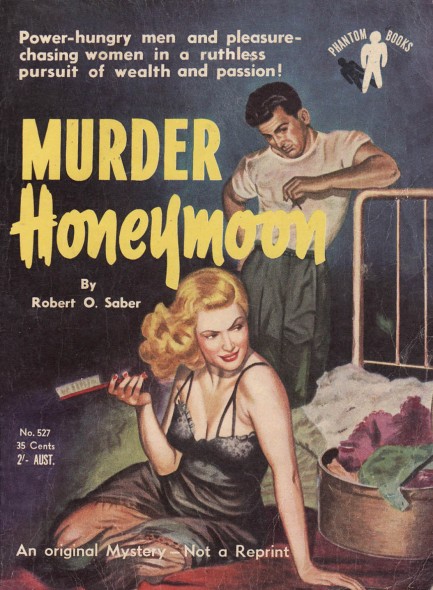
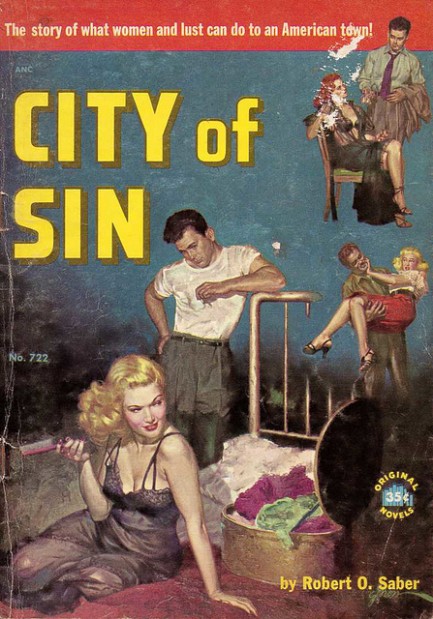 Above, great cover art for Robert O. Saber's Murder Honeymoon, a digest style paperback from the Australian imprint Phantom Books, 1953. The art originally fronted Saber's 1952 Original Novels thriller City of Sin, which you see at right, and was painted by the always amazing George Gross. Saber was aka Milton K. Ozaki, and we've featured him quite a bit because he seems to have always managed to have his books illustrated by the best. Though the art on these two books was basically the same, the novels were different. This is the first time we've come across identical art for separate novels by the same author.
Above, great cover art for Robert O. Saber's Murder Honeymoon, a digest style paperback from the Australian imprint Phantom Books, 1953. The art originally fronted Saber's 1952 Original Novels thriller City of Sin, which you see at right, and was painted by the always amazing George Gross. Saber was aka Milton K. Ozaki, and we've featured him quite a bit because he seems to have always managed to have his books illustrated by the best. Though the art on these two books was basically the same, the novels were different. This is the first time we've come across identical art for separate novels by the same author.





































































